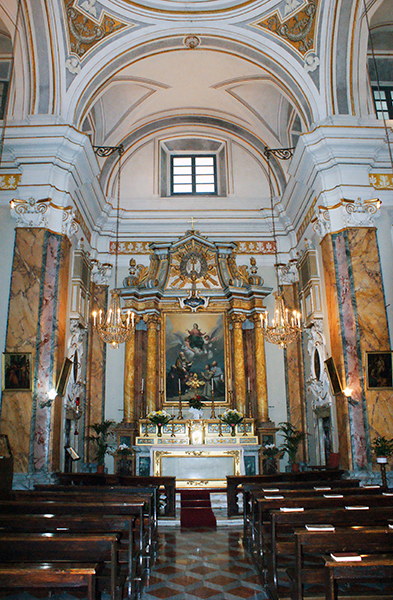
The circuit Mosse – Rojano within Perlata Valley (caldera of Montefiascone ), looks like a good passegiata with average difficulty for all nature lovers and not only. For details click on “DESCRIPTION” and download the map.
Info: OFFICE TOURISM Tel. 0761.832062-60 (h 8.00 -14.00) – www.comune.montefiascone.vt.it – Agriculture and Environment Department.
Medium difficulty. Overall length: 6,900 meters. Difference in altitude: 256 meters. Average travel time: 2 hours.
THE CIRCUIT MOSSE - ROJANO
PLACES OF INTEREST ALONG THE LAKE VALLEY ROUTE “VALLE PERLATA”- Montefiascone.
MONTEFIASCONE CALDERA (1)
The depression on the west side of Montefiascone (Madonna della Valle) is a typical caldera which was formed during the last stages of the Vulsino volcanic activity about 155,000 years ago. The caldera is still clearly visible. It has an outer diameter of about 3 km and an inner diameter of about 1,5 km. Part of the town has developed along the edge of the caldera, as “the Coste and Mosse” districts.
HYDRAULIC MILLS (1, 2, 3)
In the valley there were three mills: “Top mill” (1a), “Middle Mill” (1b) and Bottom mill (1c), owned by the Church from 1300 to 1400. In 1901 the mills worked during the day on 2 – hours shifts. The millstones thus propelled were used to grind the wheat and other cereals such as the millet, the rye, the barley and the spelt. The mill pond was usually supplied from small reservoirs upstream of each water mill and were emptied during the working hours to be filled again later. According to certain historical texts, 1/16 of the flour had to be retained by the millers (“pro mulitura”) and the sale of this flour was forbidden. Just the middle one of the three water mills along the route is still working. The ruins of the two mills on either side of this one are presently covered by vegetation
CHURCH of St. Maria della Valle (2)
The church, almost certainly built in the early Middle Ages, has a rectangular plan with a gabled roof and only one entrance on the west side. On the eastern side there is a higher rectangular building and on the right a bell tower. Inside, the ceiling is made up of decorative two-tone bricks with the inscription “Maria ora pro nobis” and a date, 1646. The devotion to Mary has always been heartfelt among the population and has been passed down until today with a Mass on September 8th, followed by a folk festival. The church was near the Castle of “Valle Perlata” which the ancient name of the valley derives from and takes its name from this valley”.















